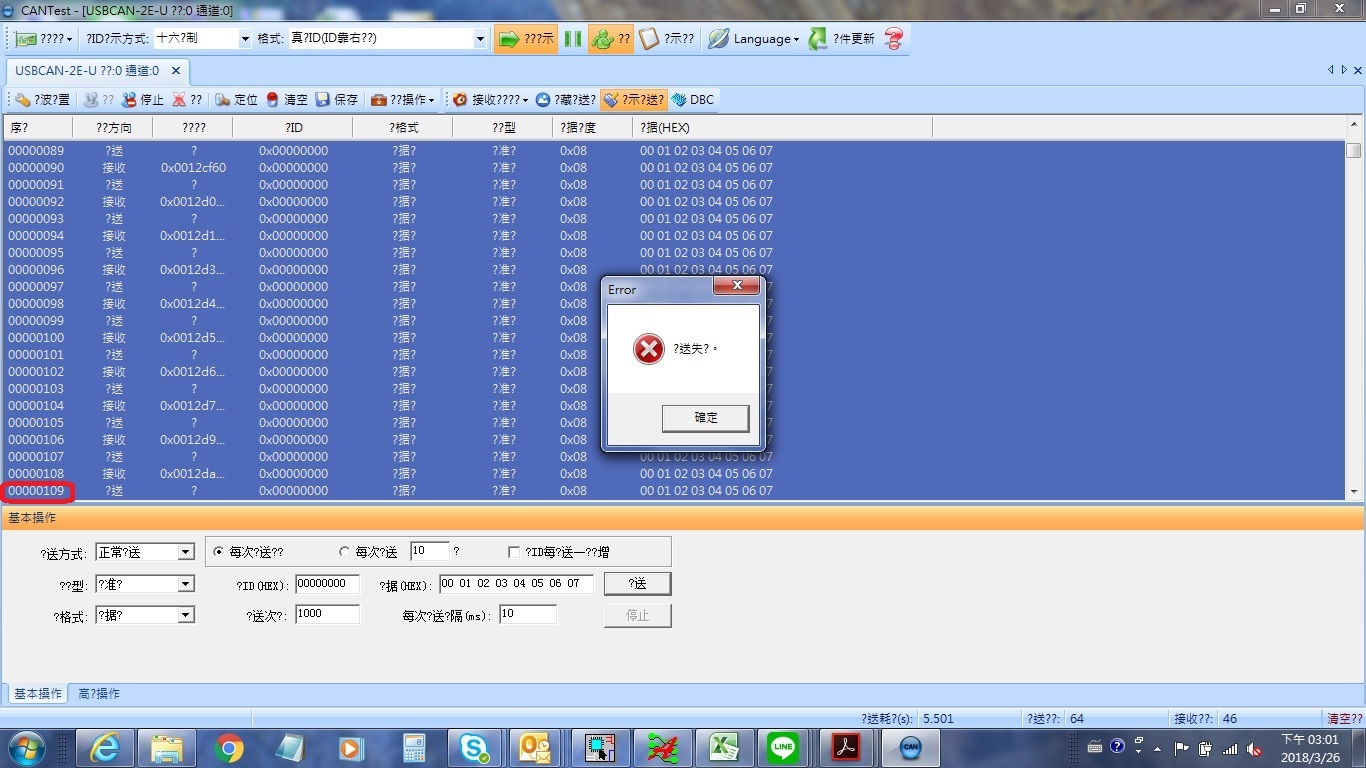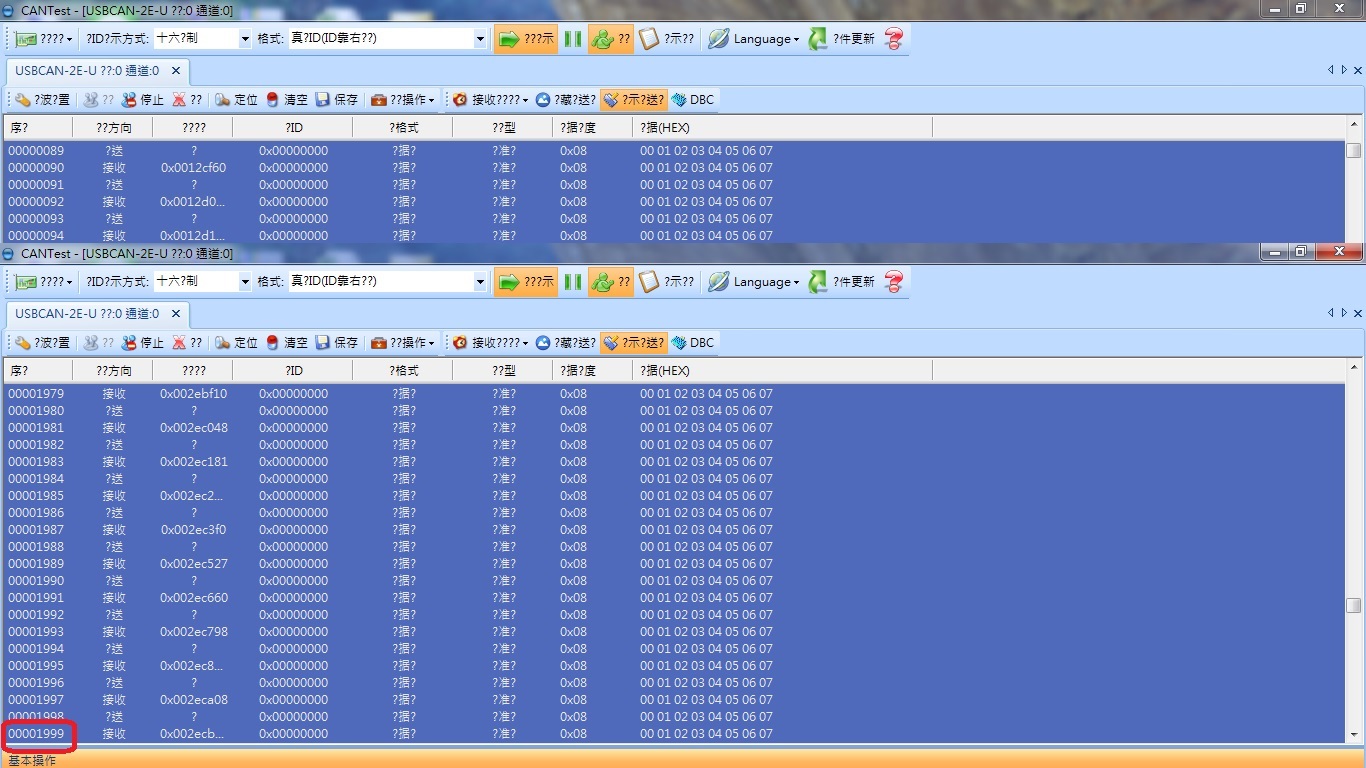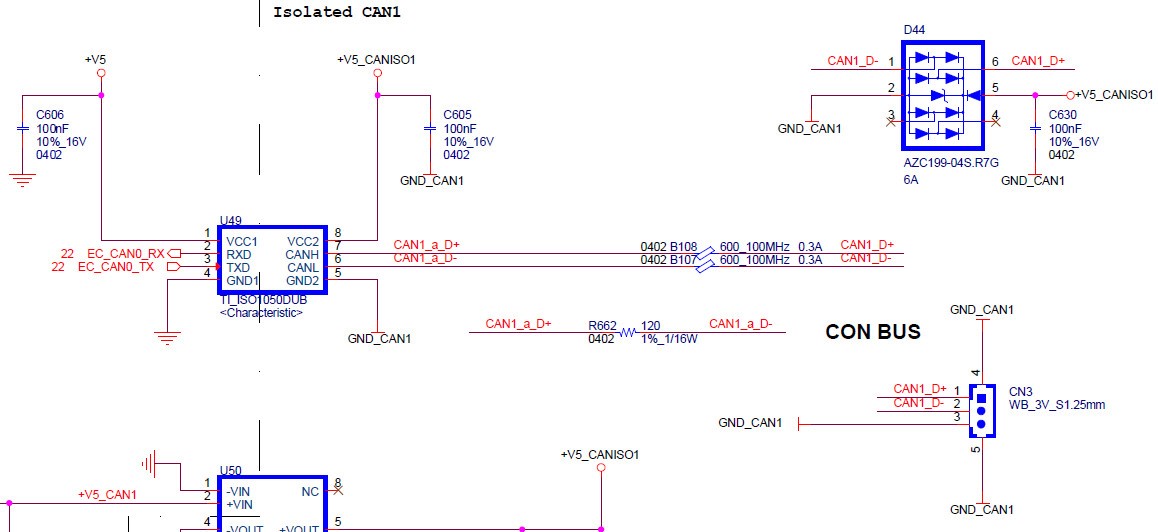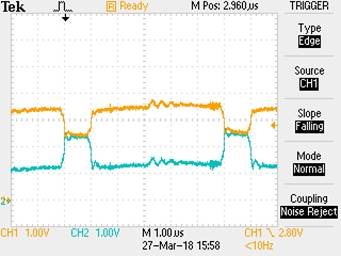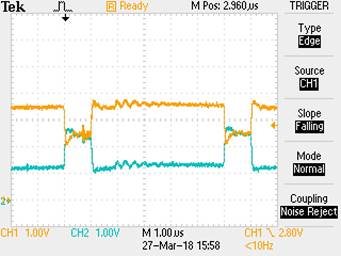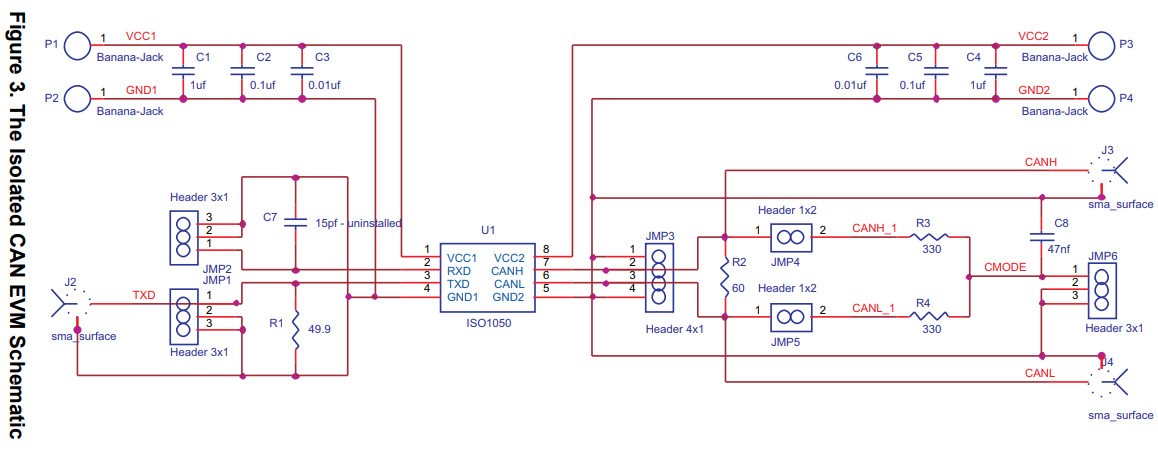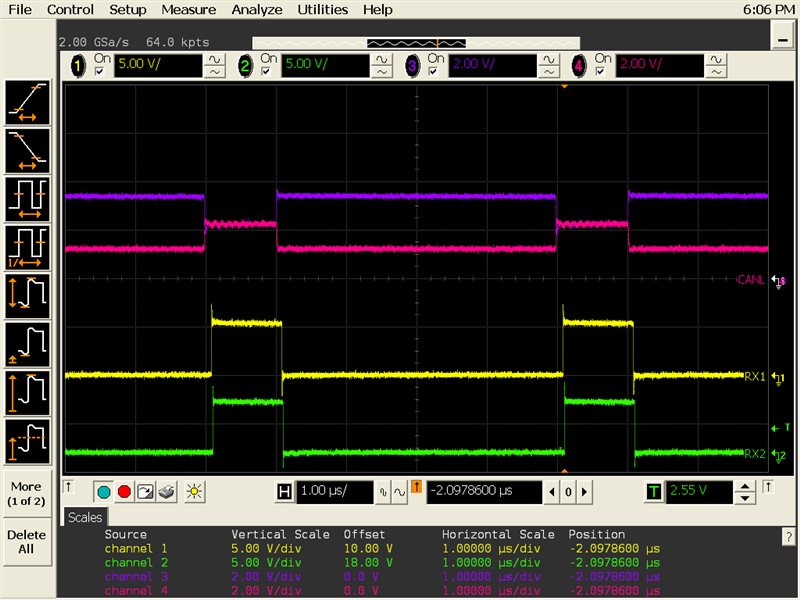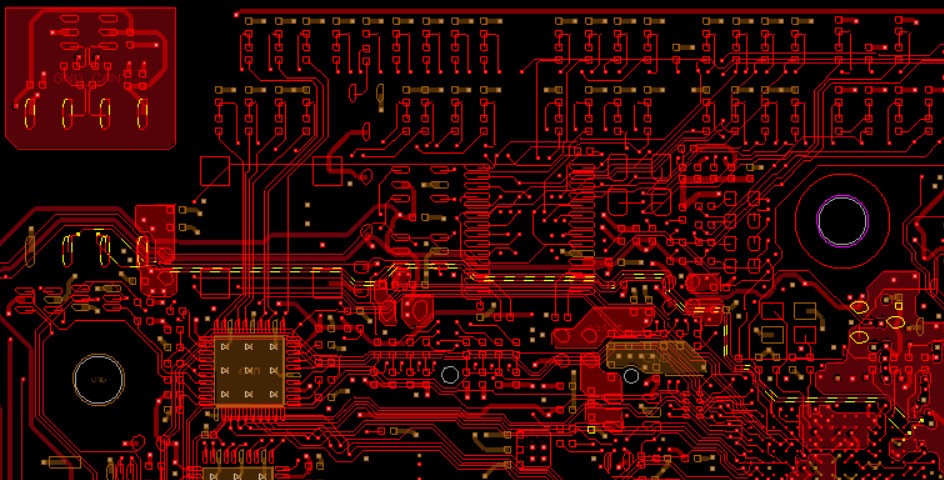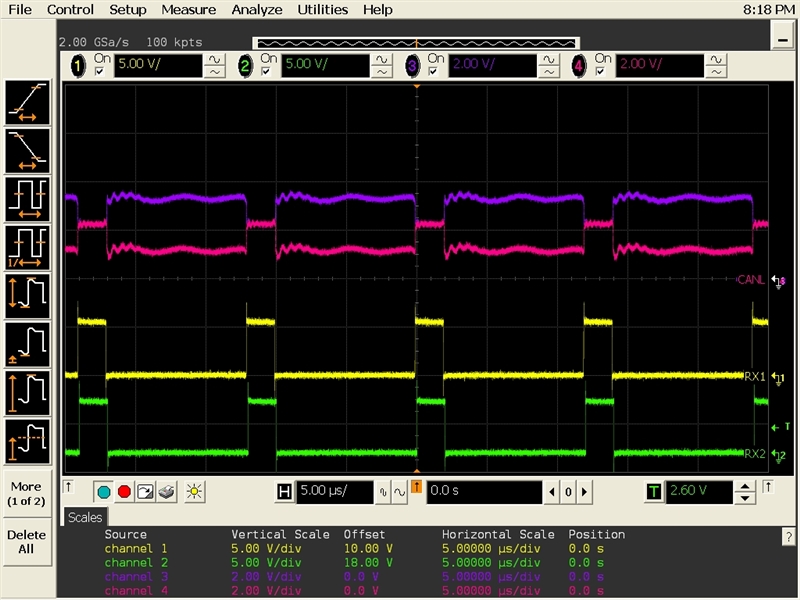Other Parts Discussed in Thread: ISO1042
Hello.
We use ISO1050 for CAN bus application got 30M @ 1Mbps question.
Please kindly let me know why R1 = 120 Ohm / R2 = 120 Ohm is not work. And R1 = 60 Ohm / R2 = Open is Work.
The test condition is transmissions 1000 times. CAN bus SPEC termination resistors is R1/R2 = 120 Ohm or not?
R1 = 120 Ohm / R2 = 120 Ohm @ 1Mbps test fail. CH1 and CH2 is CANH and CANL
R1 = 100 Ohm / R2 = 100 Ohm @ 1Mbps test fail. CH1 is ISO1050 Rx. CH3 and CH2 is CANH and CANL.
R1 = 60 Ohm / R2 = Open @ 1Mbps test Pass. CH1 is ISO1050 Rx. CH3 and CH2 is CANH and CANL.



